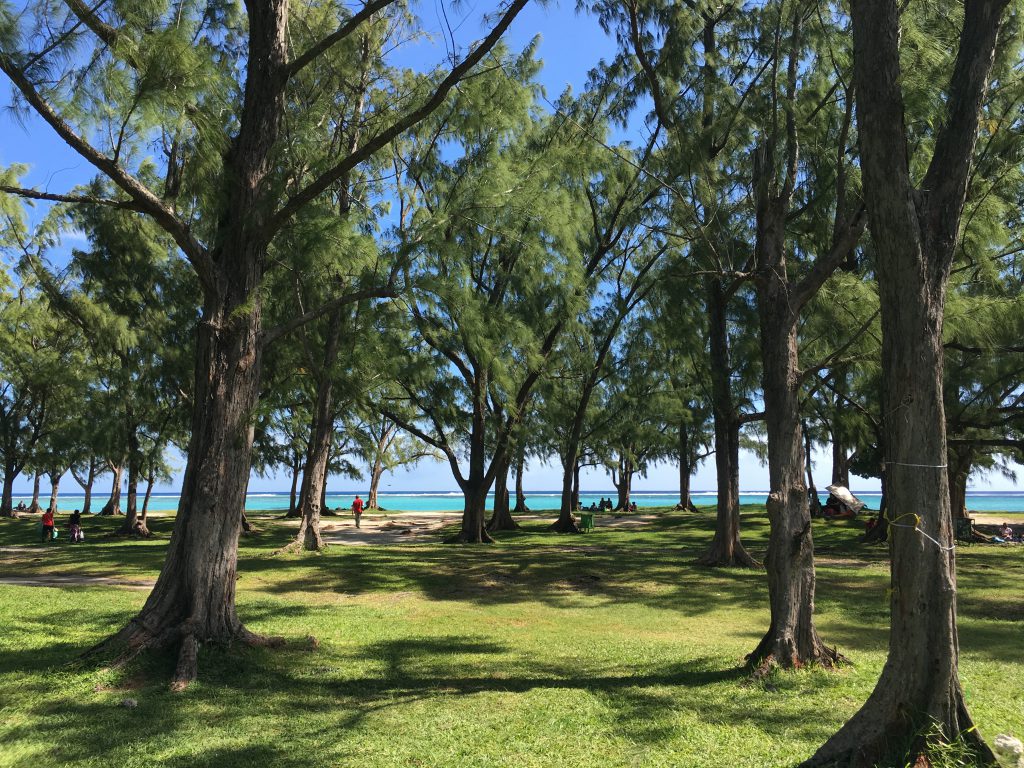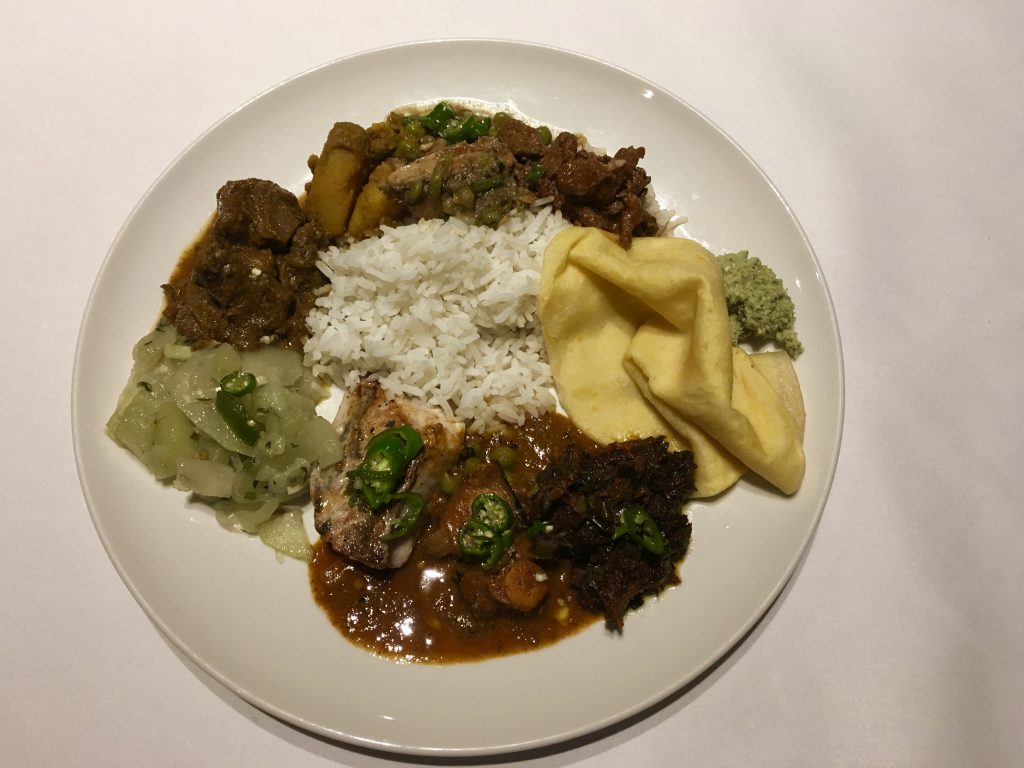Diary: Wednesday 11 May
For the third day running we pile into our minibus to see another part of the island.

The day starts at the foot of Le Morne Brabant mountain.
If you have not watched it, I would like to suggest the film Amazing Grace which charts William Wilberforce‘s campaign to abolish slavery.
Le Morne Brabant mountain and its surrounding area is a Unesco World Heritage Site and it reminded us of Seongsan Ilchulbong in Jeju Island, South Korea. Its link with the history of the slave trade goes back to the 19th century when runaway slaves would hide in the slopes of the mountain.
When slavery was abolished, policemen were sent to announce this to the slaves on 1 February 1835. Unfortunately they thought they had been discovered, and rather than return to slavery, threw themselves down the mountain to their deaths.

We visit the memorial to this tragic event which is in a beautifully landscaped garden with many sculptures depicting the idea of freedom. Le Morne Heritage Trust Fund offers guided visits around this area if you book ahead. There is no charge but a voluntary donation is appreciated.


The beach opposite the memorial is perfect for a picnic, under the shade of the casuarina trees.

Later we have a discussion about slavery and what struck us was that it really hasn’t gone away. We have just taken it from the space outside and hidden it behind doors, from the plantations of the American South, West Indies and Indian Ocean, and transferred it to the factories of China, India and beyond. The human heart never changes and we fool ourselves if we think our generation is any better than any previous generation. If anything we are capable of hiding things to a greater degree now.
Further on, Le Morne beach is a kitesurfer’s dream. The wind, as well as the sun, is strong and it is a mesmerising sight seeing the kites billowing in the wind, the experience enhanced by the sound of the waves. For refreshments there are stalls selling drinks, ice cream and fruits which the vendor will cut up to make you a customised fruit salad.



Our driver continues along the coast and lets us off at strategic points to take in yet another beautiful view. The coastal road that winds its way around the Baie du Cap must surely rank as one of the most enchanting on the island.
Towards the end of the bend (we are heading east) we stop to climb a steep flight of steps to a viewing platform perched on a rock protruding out to sea. We share this with a bride and groom from China and their friends. It was too windy, and I was too reserved, to take a photo of the happy couple but I really do admire them for travelling this distance to pose for their wedding pictures.
The rock with viewing platform

Taking in the views


Past the village of Souillac we come to Gris-Gris, on the southernmost point of the island. Without the protection of any coral reefs, the waves crash fiercely into the cliffs. Our guide Sudesh points out an area of cliffs and forests, the Roche Qui Pleure, the rock that cries I guess from being hit so hard by the waves.


All over the island we see schoolchildren on trips to the beach. What an idyllic childhood: London children take the Underground to museums to see paintings like Rousseau’s Tiger in a Tropical Storm and are asked to imagine what it is like to be wet in a hot climate. Actually they can imagine what it is like to get caught in the rain…it’s the hot climate that is more difficult to imagine.

We have lunch at a restaurant that impressed us with its Chinese, Indian, Mauritian and Western menu. That’s what the sign advertised outside and I must admit I had my doubts. However the food was all good, the service was efficient and there were even tablecloths and napkins. Someone needs to open a restaurant like this in London where we can have venison curry and fish curry with aubergine.


Back inland, we drive past another sugar cane plantation. This time, unable to resist it, we chew on some fresh sugar cane strips.
In, Out, Chew it all About



By late afternoon the Aunties are getting anxious about the departure back to Malaysia. However we still have time for a visit to the harbour of Grand Port where a naval battle between British Navy and French Navy took place in 1810. The skies darken behind imposing clouds, giving the place a heavy atmosphere.



And we still can fit in Blue Bay and a glass-bottomed boat ride out to see some reefs. Auntie C, who famously got seasick on the catamaran trip, absolutely declined to go on this ride.

Then it is time to finally take the Aunties to the airport. They said they would return to Mauritius anyday. I worry if we have made them do too much but really, it’s best to see as much whilst you are able to.
Tonight’s buffet dinner features a Mauritian theme and this is followed by sega music and dancing. Sega music has origins in the music of slaves on the island, and is usually sung in creole. This is a fitting end to a day which started with an aspect of slavery In Mauritius.


Once again, thank you to the Aunties and to the Aussies for being such great travelling companions.